From classic tatsuta age to comforting chicken nanban, Japan has countless takes on karaage. But only shio koji makes fried chicken taste savory, sweet, and just a little mysterious.
Unlike my chicken breast karaage or chicken wings karaage, this version teases out flavors you won’t expect until that first crunchy bite.
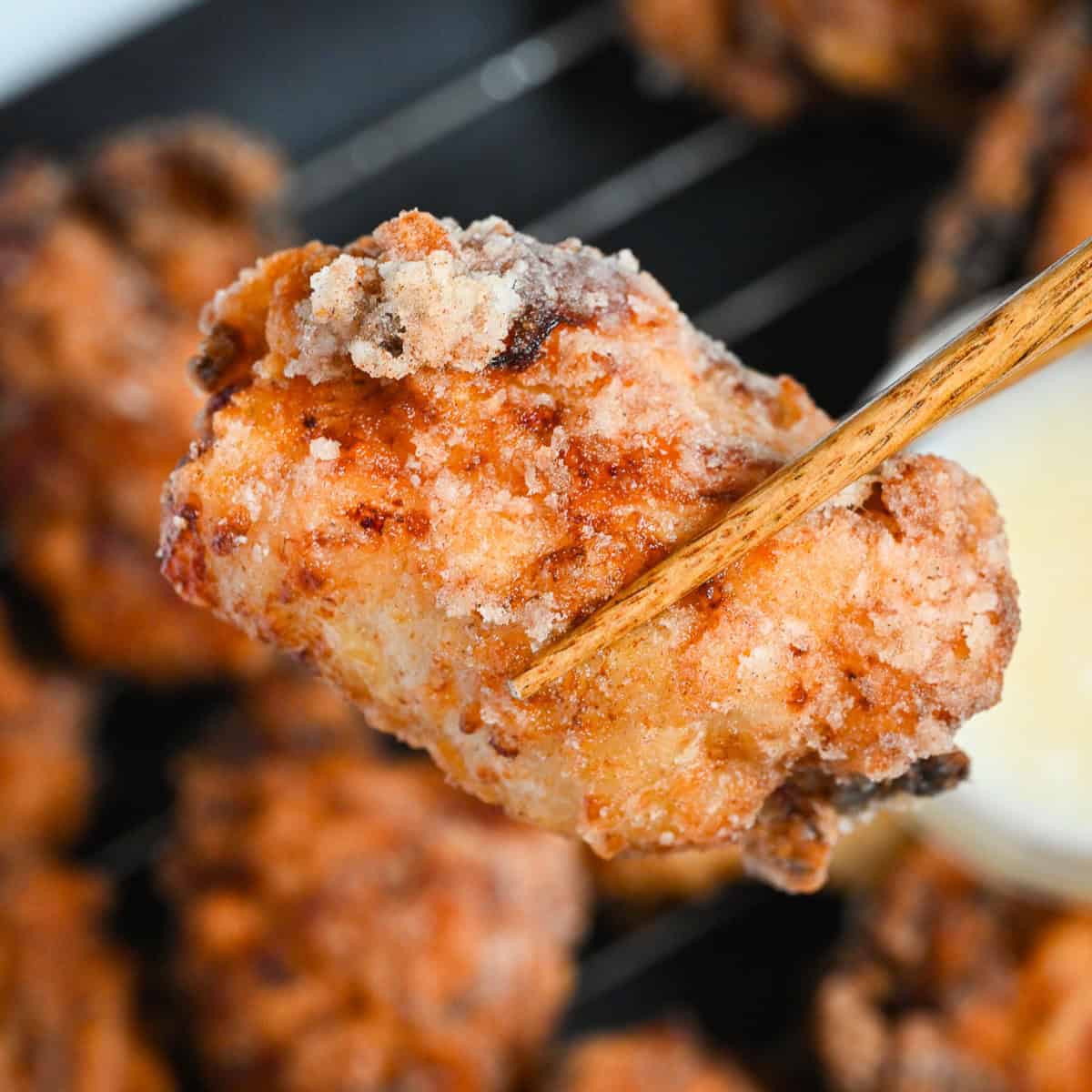
Shio Koji Chicken Karaage
Recipe Snapshot
- What is it? Crisp, golden chicken karaage with a shio koji twist.
- Flavor profile: Savory, Aromatic, Umami-rich
- Why you’ll love this recipe: This recipe delivers the crispy-outside, juicy-inside results with a flavor depth that’ll have your guests asking for the secret.
- Must-haves: Chicken thighs, Shio koji, Starch
- Skill Level: Medium
- Freezer Friendly? Yes!
- Suitable for Meal Prep? Yes!
Summarize & Save this content on:
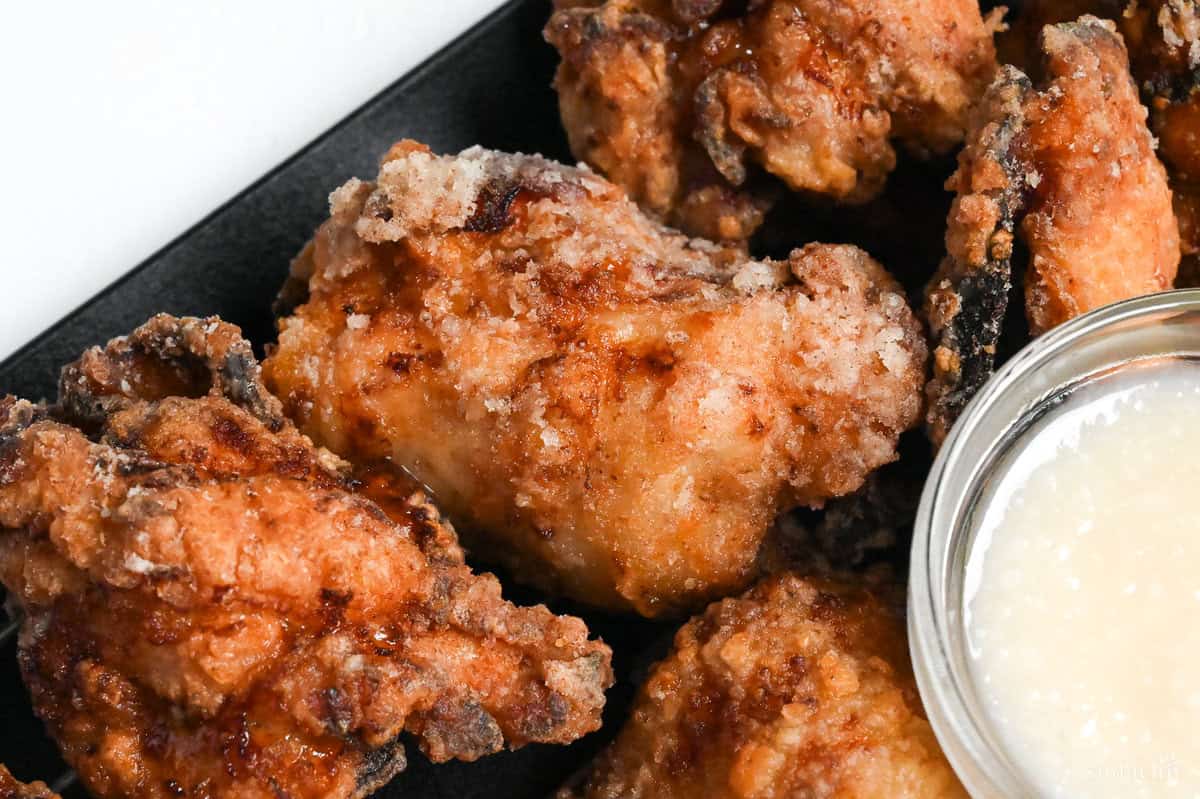
What is Shio Koji?
Shio koji (塩麹) is a traditional Japanese ingredient made by fermenting rice koji, salt, and water into a slightly thick, creamy paste. During fermentation, enzymes in the koji break down starches into sugars and proteins into amino acids, creating a natural balance of savory depth and gentle sweetness.
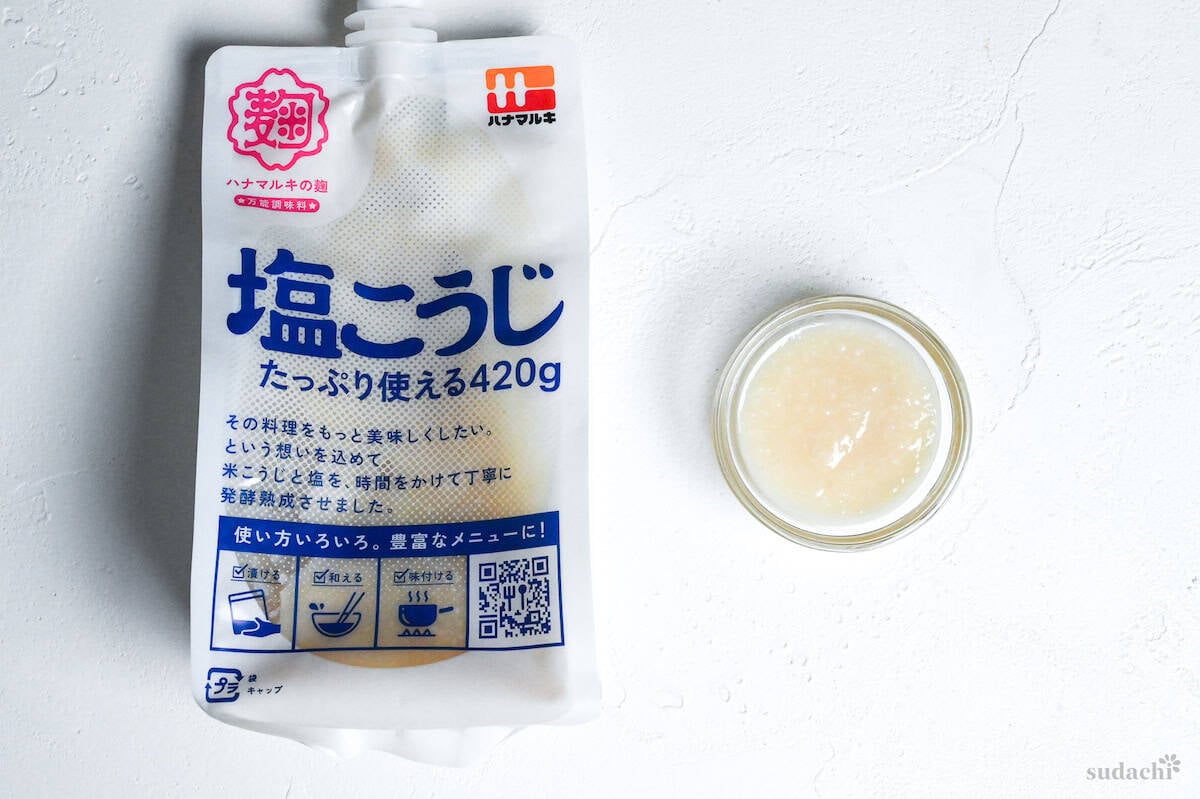
What makes shio koji special is its ability to tenderize proteins while enhancing their flavor. When used in dishes like shogayaki or kakuni, the enzymes help keep the protein juicy, while the seasoning layers on a rounded umami that plain salt alone can’t achieve.
It’s considered a “modern classic” in Japanese home kitchens, versatile enough to marinate meats, season dressings, or enrich simmered dishes, all with minimal effort.
Shio Koji Karaage Ingredients
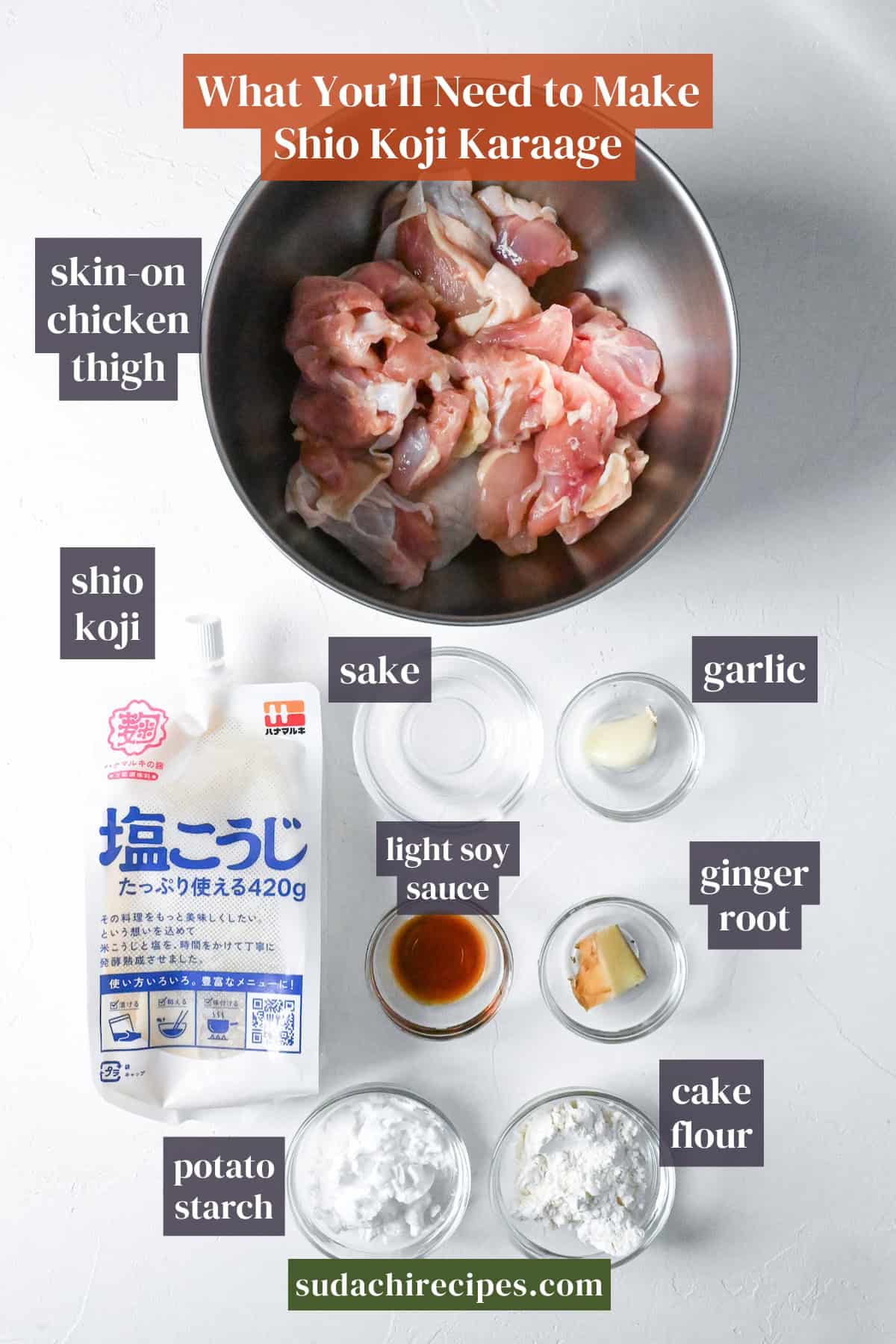
- Shio koji: You’ll find pouches labeled “Shio Koji” or “Nama Shio Koji” at well stocked Japanese/Asian groceries or you can order it online.
- Chicken Thighs: Thigh meat is your best friend here. For the best result, choose boneless thighs with skin on.
- Potato starch (katakuriko): This pure starch creates a thin, shattering shell that stays light and crisp and doesn’t over-brown. It’s relatively easy to find as “potato starch” or “katakuriko” at Asian groceries.
Substitution Ideas
- Japanese Light Soy Sauce: Regular Japanese soy sauce or Chinese light soy sauce both work here.
- Potato Starch: Cornstarch or tapioca starch will give you a crispy crust too, so use whichever you have on hand.
- Sake alternatives: Dry sherry or dry white wine add similar depth, or swap in water if you want to avoid alcohol altogether.
Have trouble finding Japanese ingredients? Check out my ultimate guide to Japanese ingredient substitutes!
How to Make My Shio Koji Karaage
Before you start: Cut boneless, skin-on chicken thighs into large bite-size pieces.
i. Toss with shio koji, sake, light soy sauce, grated ginger, and grated garlic clove until every surface is coated.
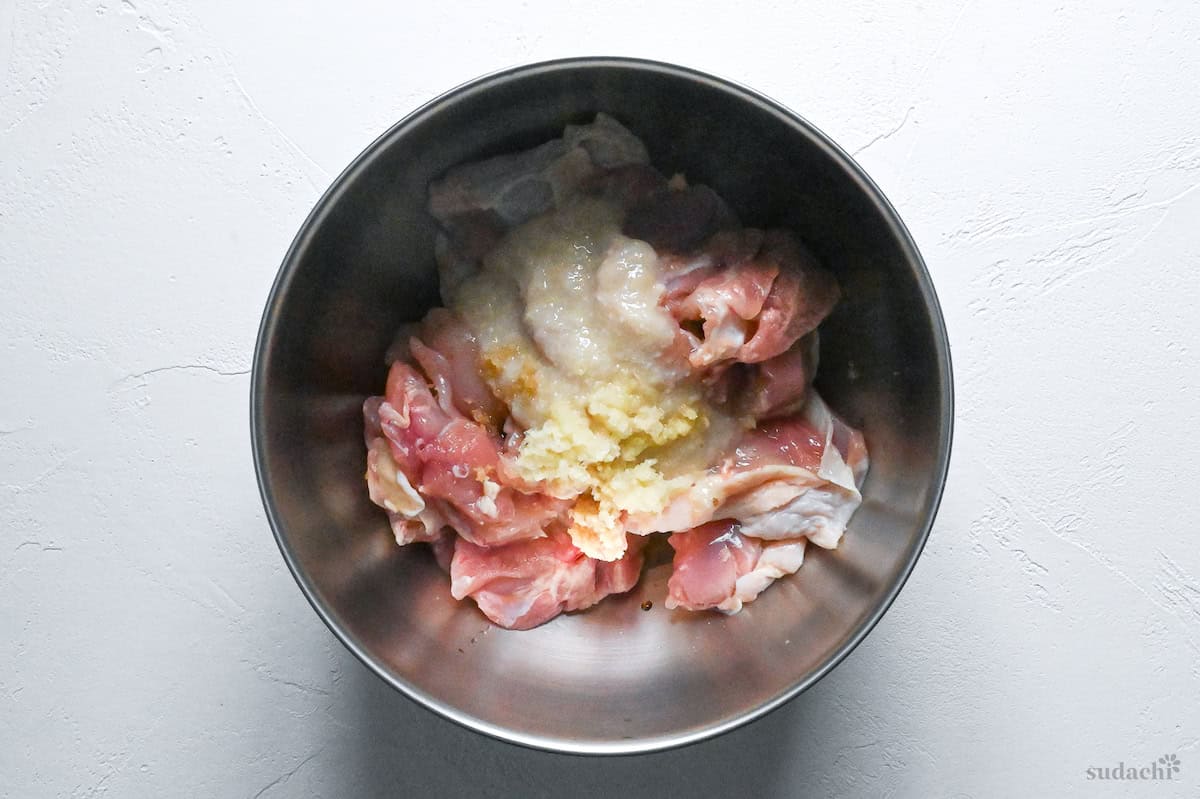
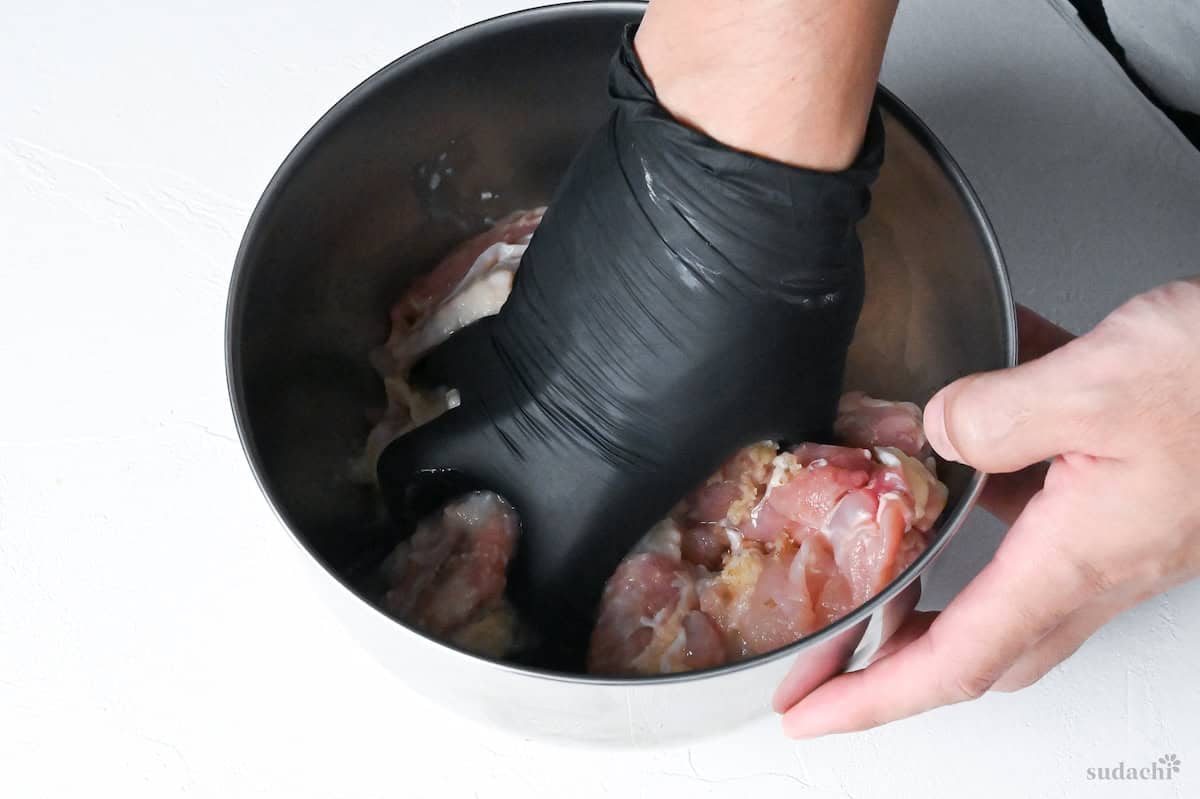
ii. Cover and marinate in the fridge for 30 minutes.
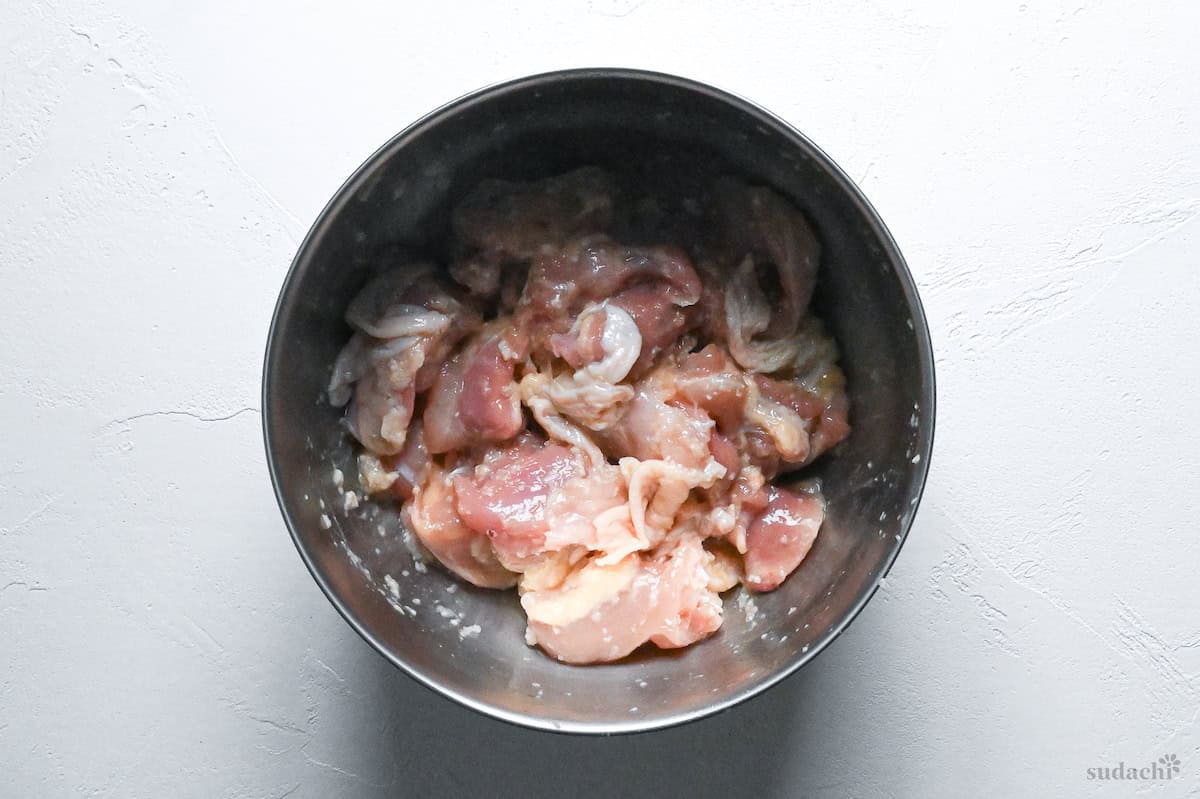
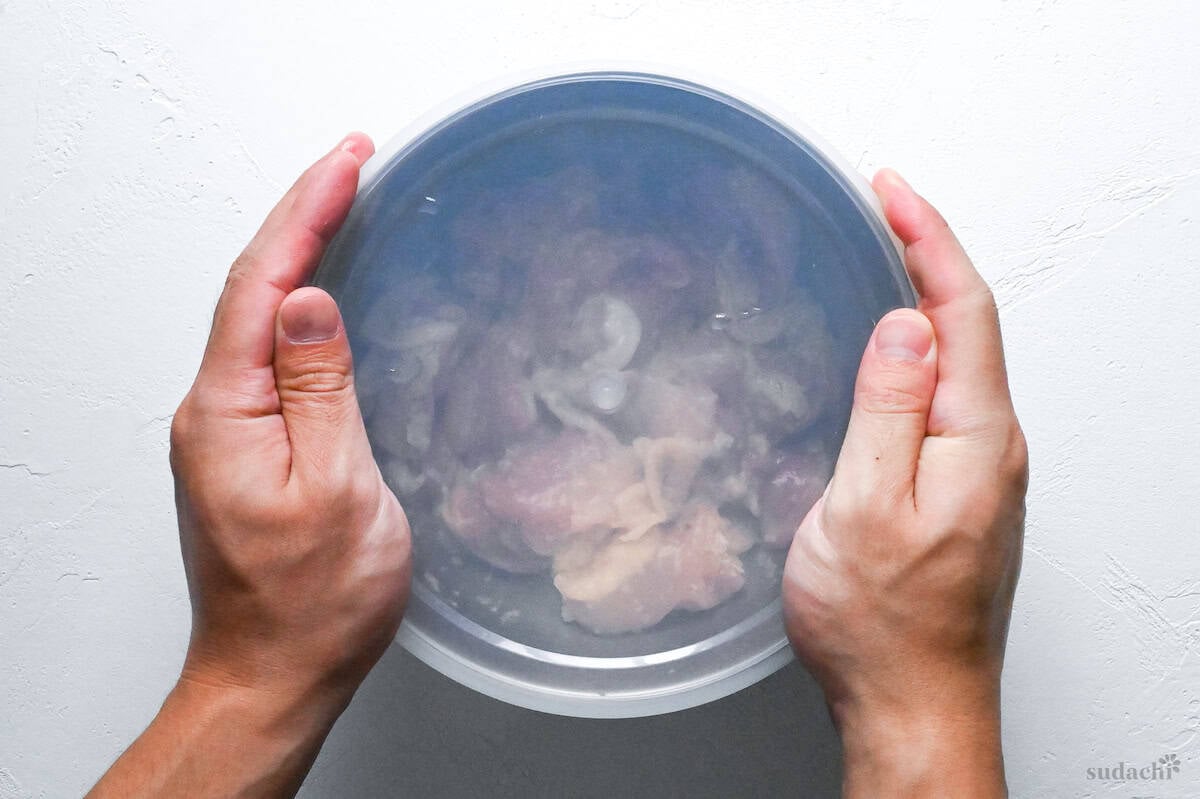
This brief, cool rest lets koji’s enzymes start tenderizing and boosting umami without making the exterior mushy.
i. Pour neutral oil into a heavy pot and heat to 160℃ (320°F). Starting at 160℃ cooks the meat gently so the crust sets without over-browning shio-koji sugars.
i. Scrape the excess marinade off of the chicken so only a thin film remains to prevent burn, then stir all-purpose flour + potato starch into the bowl to form a light, clingy paste.
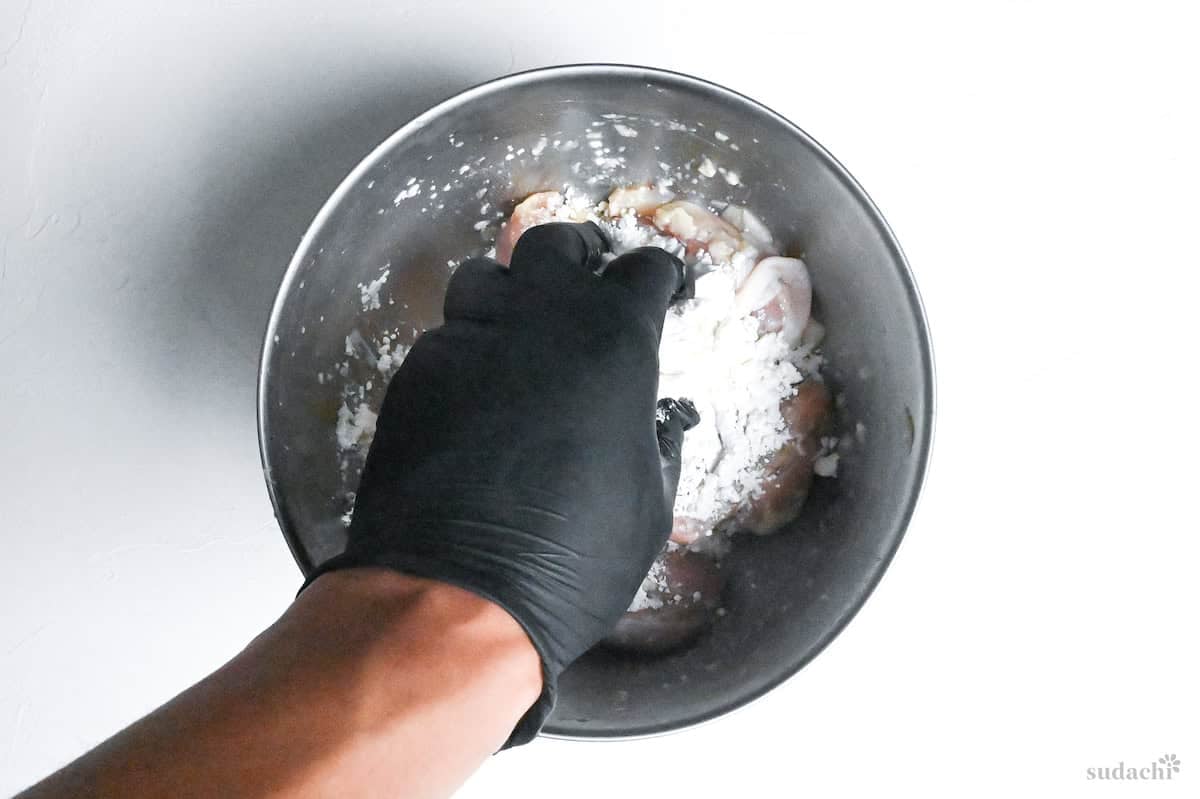
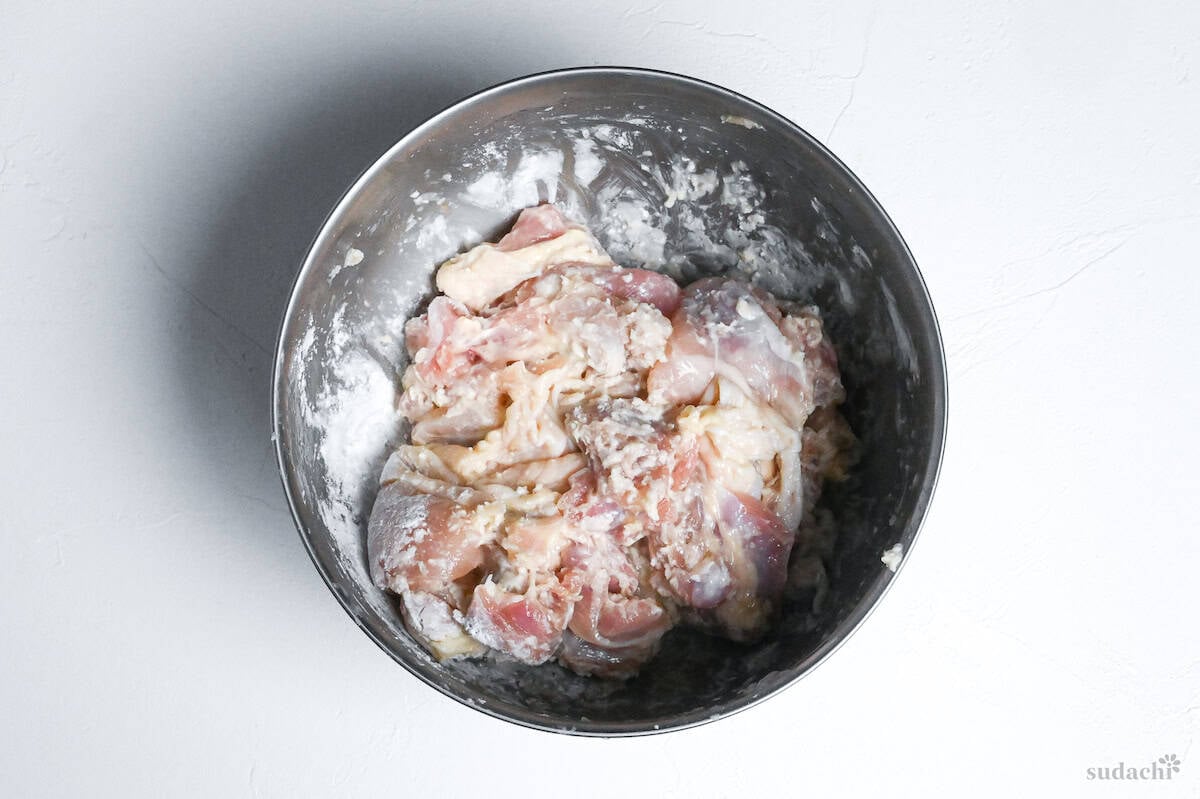
ii. Spread more potato starch on a tray and roll each piece to coat every surface in a very thin, even layer. Shake off excess so no powdery patches remain.
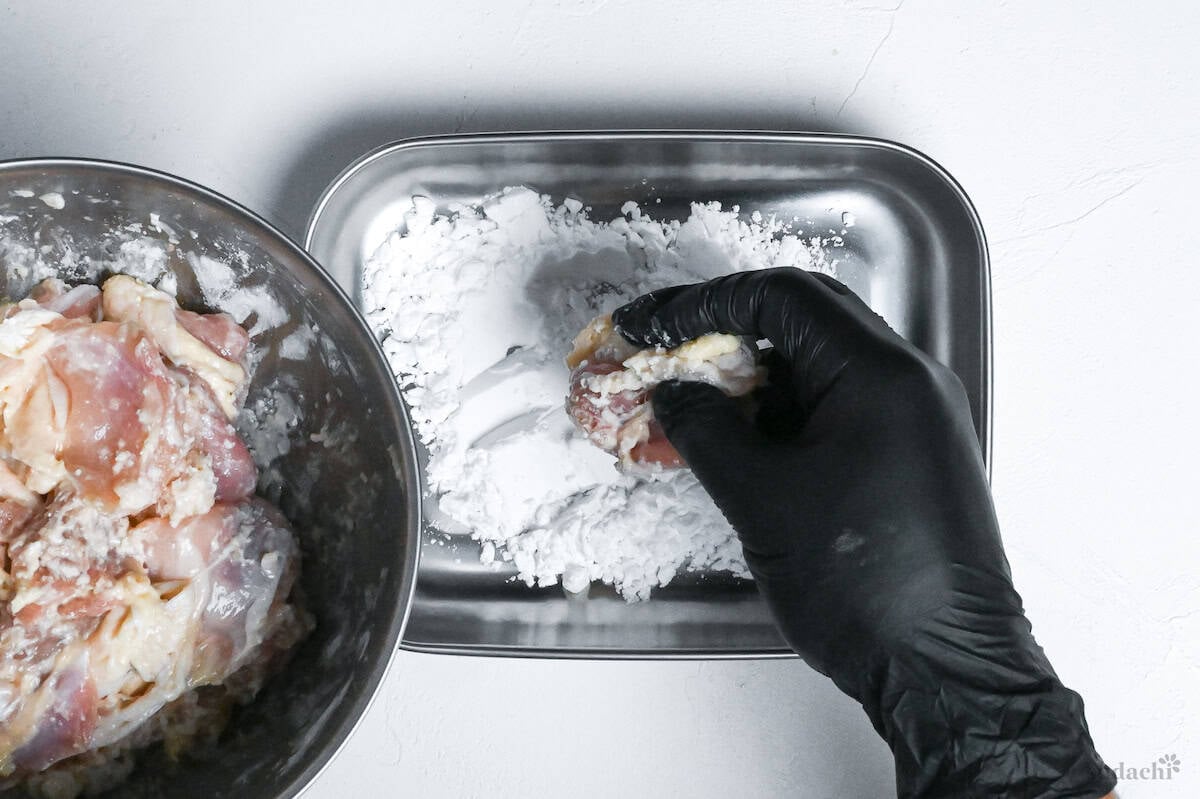
This double-coat locks in juices, reduces hot spots where sugars could scorch, and sets you up for lasting crunch.
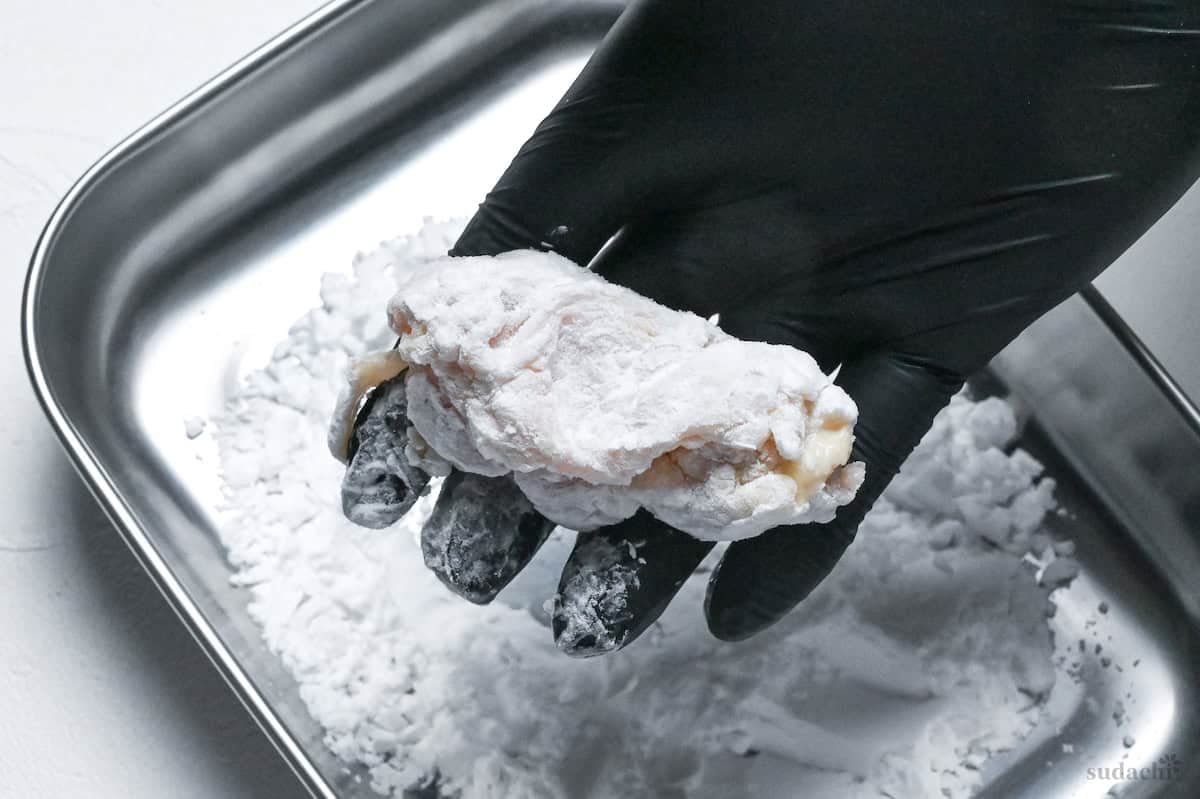
Shio koji’s sugars (from rice koji) and free amino acids are prone to rapid Maillard browning. Gorgeous in moderation, blackened if you’re not careful. Potato starch contains almost zero sugar and no gluten, so it stays pale longer and crisps into ultra-light, glass-like shards that hold their crunch even after the chicken cools.
Flour alone would give you a thicker, breadier crust that could turn leathery.
i. Slide in 3-5 pieces and fry at 160℃ (320°F) for about 3 minutes, stirring gently so they don’t settle and stick to the bottom. Look for pale-blond chicken with small, tight bubbles and a soft hiss.
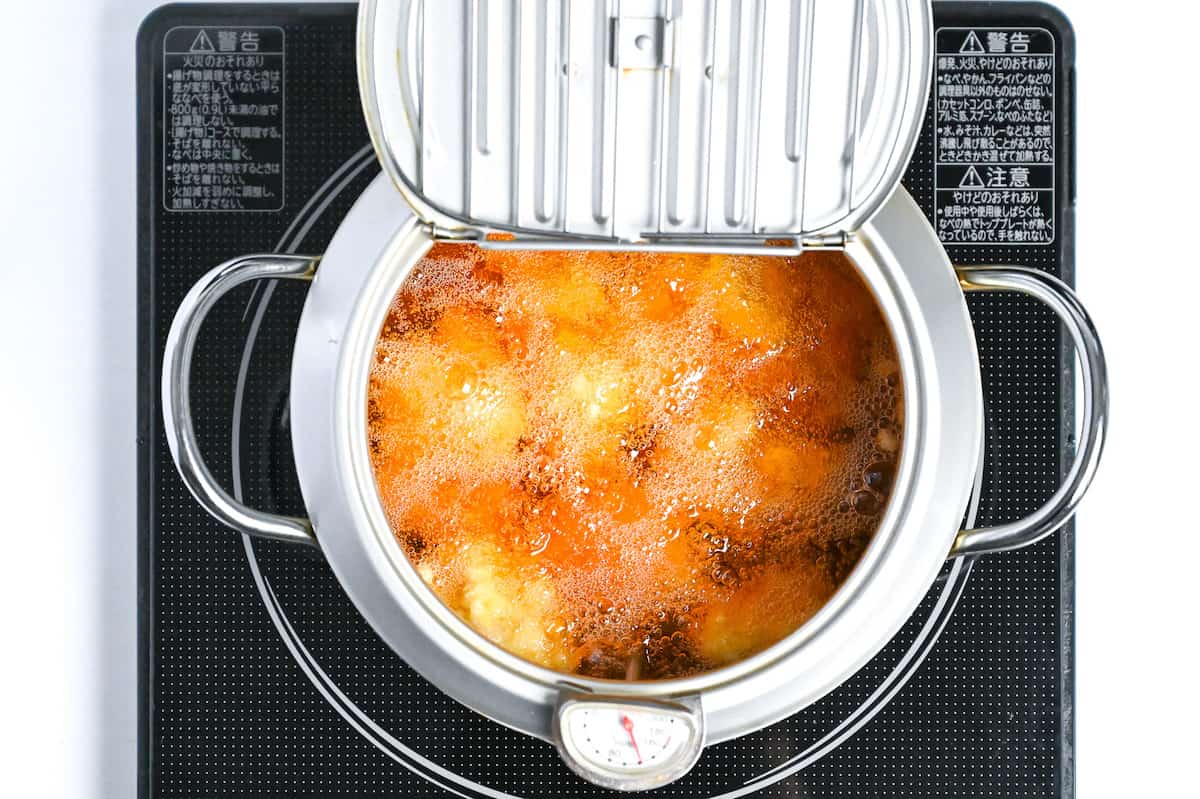
ii. Rest the pieces on a wire rack for 3 minutes so steam escapes and carryover heat evens out the center. Keep them elevated (not on towels) to avoid steaming the undersides and softening the shell.
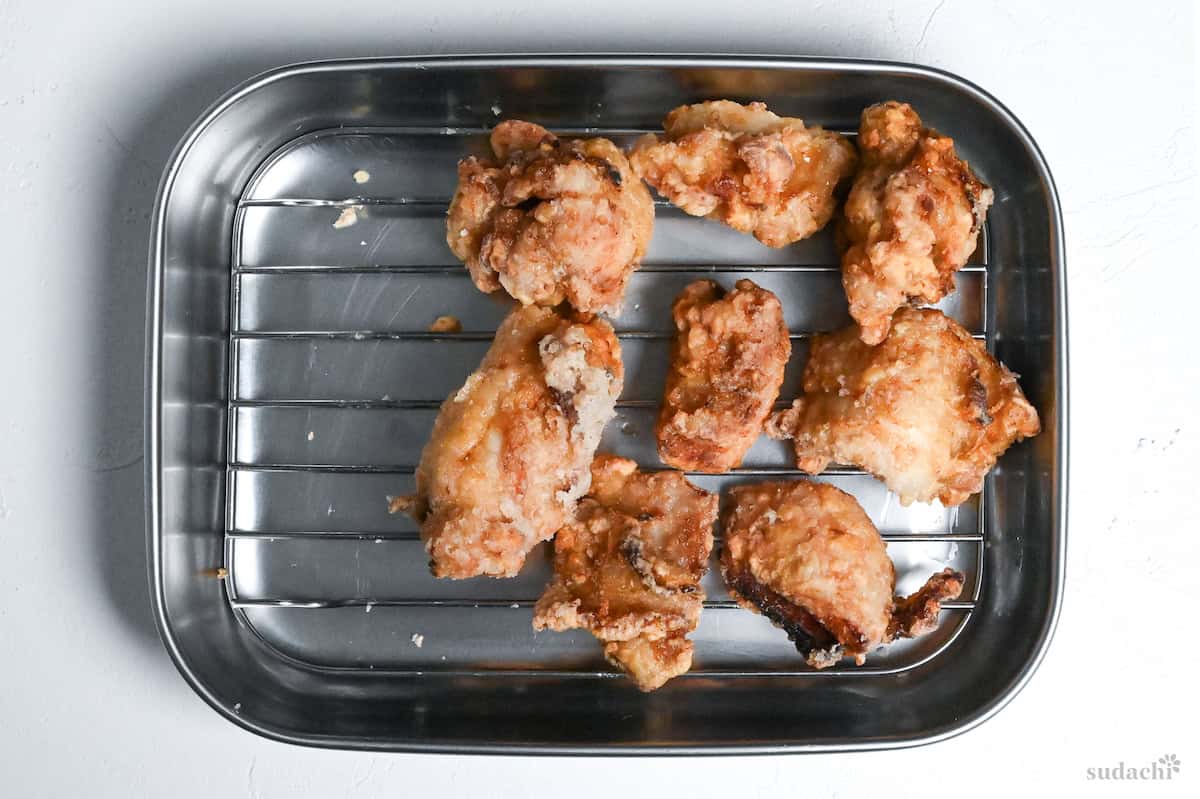
i. Raise the oil to 185-190℃ (365-374°F) and return the chicken in batches for 30-60 seconds, just until the crust turns an even medium-gold and the sizzle sounds sharper.

ii. Pull immediately.
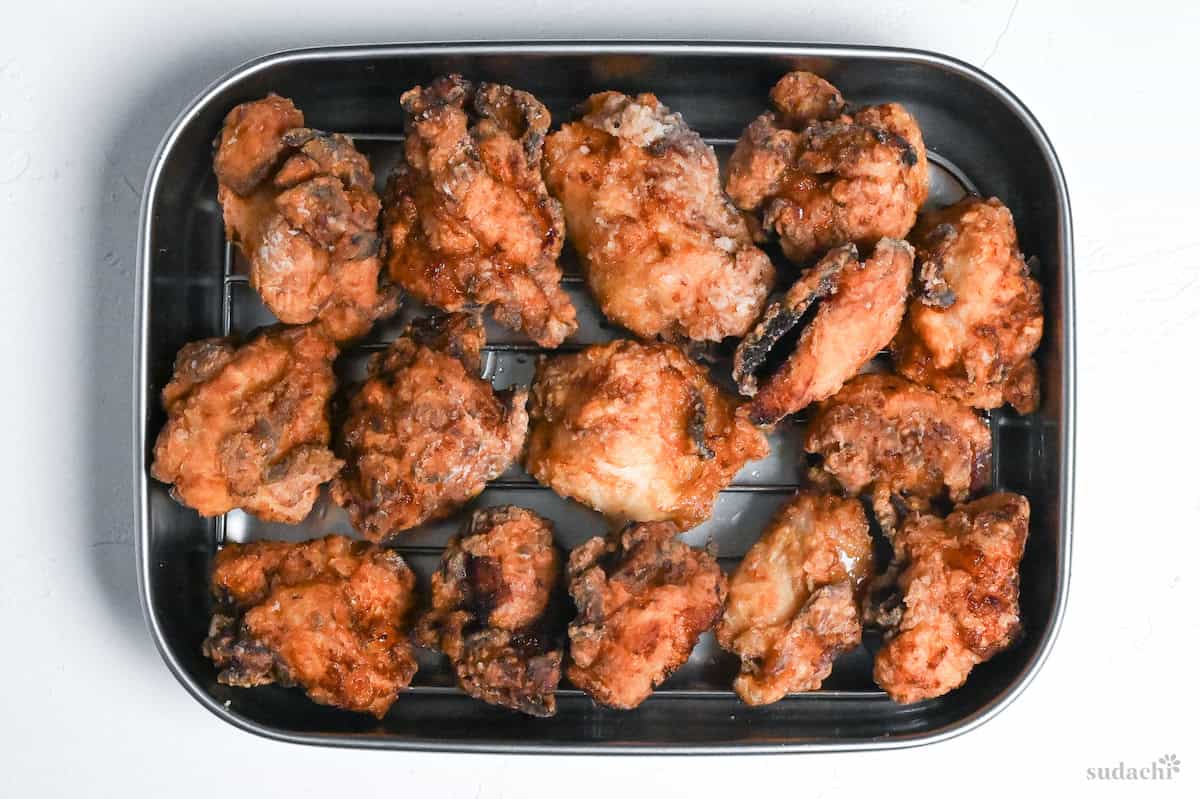

Essential Tips & Tricks
- Marinate chicken in shio koji no longer than 30-120 minutes to avoid mushy texture or excess saltiness.
- Always pat chicken lightly before dredging so sugars don’t burn during frying.
- Use potato starch for the final coating.
- Fry twice: first at 160℃ (320°F) to cook through, then briefly at 185-190℃ (365-374°F) to crisp the crust.
- Rest fried chicken on a wire rack, not paper towels.
With these simple tips in mind, you’re set for success every time you make shio koji karaage.
Storage & Meal Prep
Fridge: Store fried chicken in an airtight container after cooling completely. Best within 1-2 days. The coating will soften, so reheat to restore crispness.
Freezer: Wrap individual pieces or lay flat in a freezer bag with as much air removed as possible. Keeps up to 1 month. For best results, reheat from thawed state in oven or air fryer.
Meal Prep: You can marinate the chicken up to 2 hours ahead and keep it covered in the fridge. For longer prep, freeze the marinated chicken (without coating) and thaw overnight before dredging and frying.
Reheating: Best method: oven or air fryer at 180-200℃ (356-392°F) for 5-7 minutes until hot and crisp. Flip halfway for even reheating. Microwave alone is not recommended, but if using, pair with a brief oven/toaster finish.
What to Serve With This Recipe
Shio Koji Karaage Q&A
Shio koji is a Japanese fermented seasoning made from rice koji, salt, and water. During fermentation, enzymes in koji break down starch into sugars and proteins into amino acids, producing gentle sweetness and rich umami. It has a pale, slightly thick paste texture and a mild aroma compared to miso or soy sauce.
References to shio koji as a pickling medium for vegetables and fish appear in the Edo-period text Honchō Shokkan (1697). It was rediscovered and commercialized in modern times, with a nationwide boom in 2012 when “shio koji” was nominated for a buzzword award. Today it is considered a staple seasoning alongside miso, soy sauce, and mirin.
It offers a “three-in-one” benefit: (1) boosting umami by producing amino acids such as glutamate, (2) tenderizing meat through protease enzymes that break down muscle proteins, and (3) seasoning with mild salinity. Unlike plain salt, it enhances flavor complexity and juiciness.
Enzymes partially break down proteins in chicken, releasing peptides and amino acids that intensify savory flavor. The protease also weakens muscle fibers, keeping meat tender even after frying. The result is karaage with deeper umami, softer texture, and a lighter salinity than soy-based marinades.
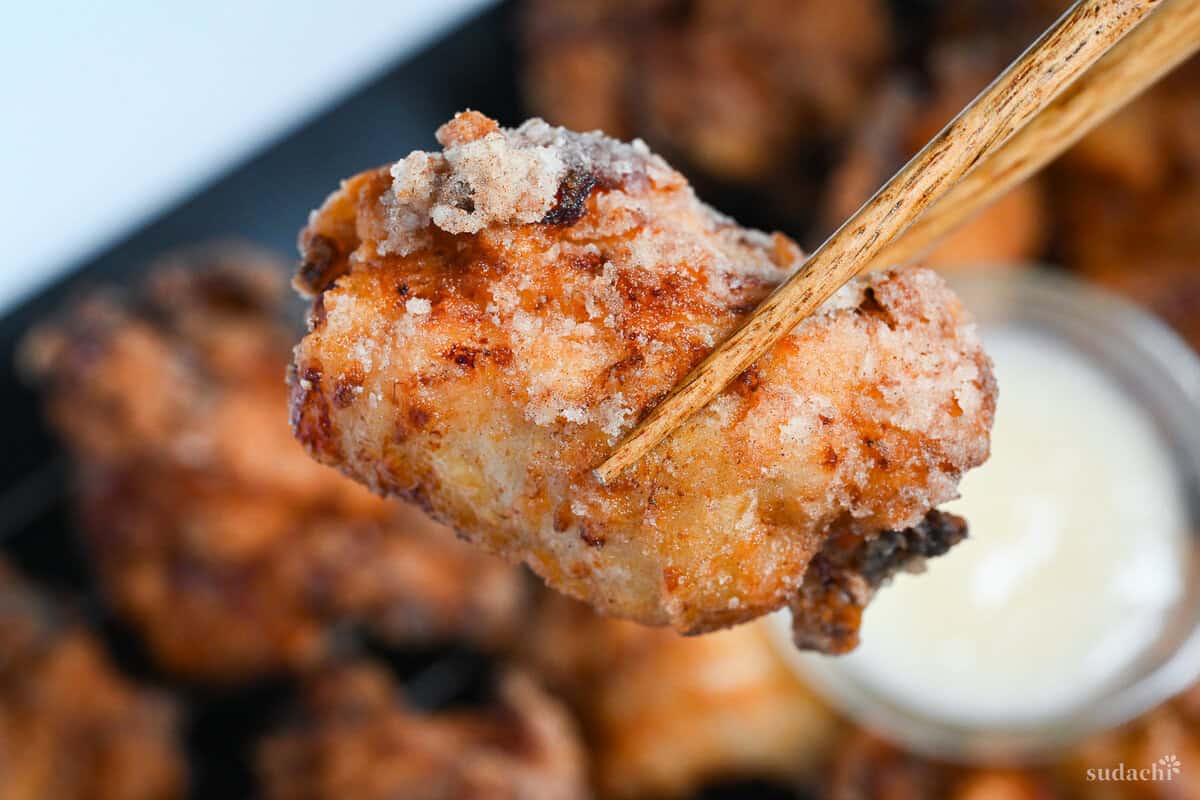
More Japanese Chicken Recipes
Looking for more? I’ve gathered the best Japanese chicken recipes to bring restaurant-quality meals to your kitchen.
Did You Try This Recipe?
I would love to hear your thoughts!
💬 Leave a review and ⭐️ rating in the comments below. 📷 I also love to see your photos – submit them here!
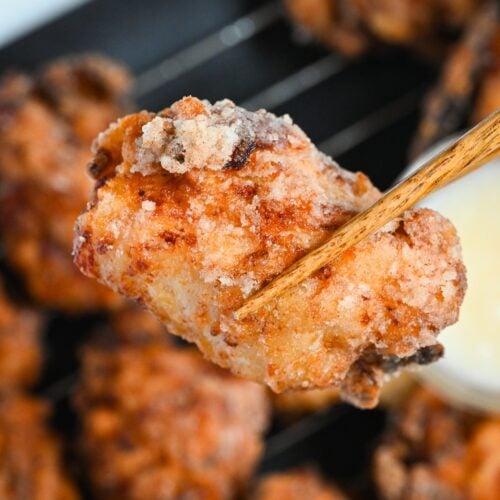
Shio Koji Karaage Chicken
Ingredients
- 450 g boneless chicken thigh skin-on
- cooking oil neutral flavor, high smoke point for deep frying
Marinade
- 2 tbsp shio koji
- 1 tbsp sake or dry sherry, white wine, water
- ½ tsp Japanese light soy sauce (usukuchi shoyu) or regular Japanese soy sauce
- ½ tbsp grated ginger root or ginger paste
- 1 clove grated garlic or garlic paste
Coating
- 2 tbsp all-purpose flour or cake flour, don't use bread flour
- 2 tbsp potato starch (katakuriko) or cornstarch, tapioca starch
- 4 tbsp potato starch (katakuriko) for final coating
My recommended brands of ingredients and seasonings can be found in my Japanese pantry guide.
Can’t find certain Japanese ingredients? See my substitution guide here.
Instructions
- Cut 450 g boneless chicken thigh into large bitesize pieces and place them in a large mixing bowl. Add 2 tbsp shio koji, 1 tbsp sake, ½ tsp Japanese light soy sauce (usukuchi shoyu), ½ tbsp grated ginger root and 1 clove grated garlic.

- Mix well until evenly coated, then cover the bowl and refrigerate for 30 mins (2 hours max).

- Preheat a deep pot of cooking oil to 160 °C (320 °F). While you wait, scrap the excess marinade off the surface of the chicken and sprinkle in 2 tbsp all-purpose flour and 2 tbsp potato starch (katakuriko). Mix until the chicken pieces are coated in a thin sticky paste.

- Sprinkle 4 tbsp potato starch (katakuriko) on a tray. Once the oil is ready, roll each piece of chicken until evenly covered. Shake off the excess, and drop them straight in the oil.

- Deep fry for 3 minutes. Nudge gently to prevent sinking and sticking to the bottom, and be careful not to overcrowd the pot. Cook in batches if necessary.

- Transfer to a wire rack and rest for 3 minutes. This step must not be skipped – the chicken will continue to cook with residual heat.

- Increase the heat to 185 °C (365 °F) and then place the chicken in the oil once more. Fry for 30-60 seconds or until a medium gold color.

- Rest on a wire rack once more to drain excess oil. After a few minutes, serve and enjoy!




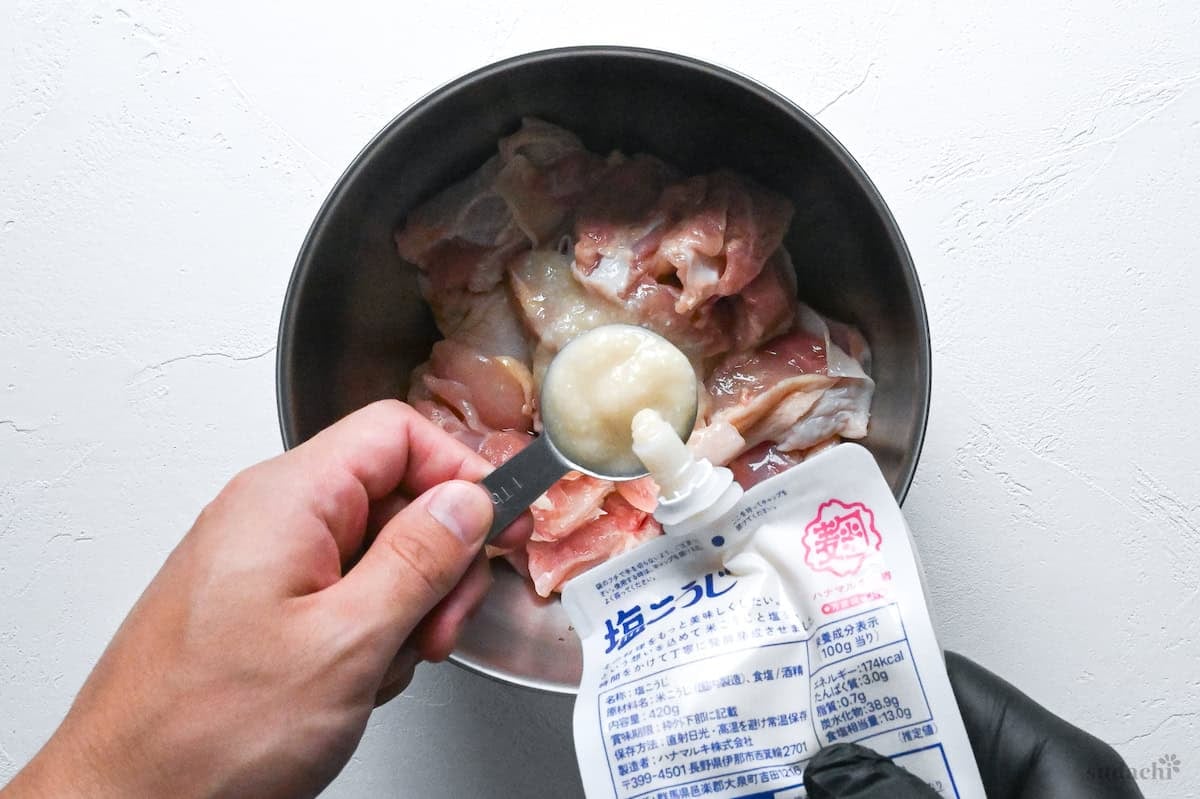
Leave a rating and a comment